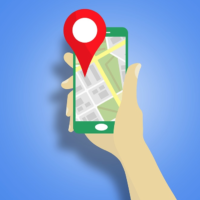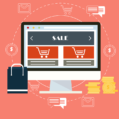Weekly Focus APAC: Half of Marketers Win Shoppers With Geofencing


In this edition of Weekly Focus APAC: Half of Marketers Win Shoppers With Geofencing; Alibaba Opens B2B Marketplace to US Sellers; Gojek Rebrands to Signal Regional Growth Ambition; and Autonomous Bots Aim to Keep Singapore Clean.
Half of Marketers Win Shoppers With Geofencing
Some 51% of Asia-Pacific marketers are winning over shoppers with geofencing tactics, while 53% are directly targeting competitor stores through 'geo-conquesting'.
Another 48% were tracking the correlation between store traffic and sales, according to a Blis study that polled 150 CMOs in the region across travel, retail, and consumer goods sectors as well as marketing agencies.
Conducted by WBR Insights, the survey also revealed that 35% of respondents were tapping location data to plug the attribution gap between online and offline. In addition, 38% said they used the data to gain insights on store location performance while 43% assessed the data to track returns on advertising spend.
Blis CEO Greg Isbister said: "Real-world intelligence opens up a new level of understanding regarding consumer behaviour--the truth about what people actually do. Location data technology has advanced in leaps and bounds over the last few years and we're now seeing marketers commit more spending than ever to highly innovative and engaging campaigns.
"Brands also trust the business-critical information they receive from real-world intelligence, gleaned from analysing vast quantities of location data. It allows them to better understand the customer journey, see which stores are performing well, improve attribution models, and map where consumer demand is coming from," Isbister noted.
According to the study, 42% of CMOs in the region targeted shoppers based on online and offline behaviour data.
With consumers increasingly using their mobile phones while shopping in-store, Blis said the integration of location-based data with marketing capabilities could be the next key step for brands and retailers, so they could tap into these omnichannel shopping habits.
According to the study, 31% of Asia-Pacific marketers forked out between USD$10,000 and USD$50,000 (£8,033 and £40,163) annually on paid advertising based on location data, while 21% spent between US$50,000 and USD$100,000 (£80,326). Another 11% spent more than USD$100,000 a year on such advertising.
Alibaba Opens B2B Marketplace to US Sellers
The Chinese e-commerce giant has opened its business-to-business (B2B) platform, Alibaba.com, to manufacturers, wholesalers, and distributors in the US, offering tools to help small and midsize businesses (SMBs) expand their reach.
Launched in 1999, Alibaba first launched the online platform as a way to connect wholesalers and manufacturers in China with overseas buyers. It now was opening the marketplace to US companies and aiming to help 30 million SMBs in the country to sell more effectively via the platform.
The site currently serves 10 million active buyers and some 150,000 sellers.
Alibaba hopes to entice US SMBs to join the platform through a network of industry partners, including two "anchor sellers" Office Depot and Robinson Fresh, which would offer the goods and services the smaller enterprises needed to compete globally.
Alibaba Group's B2B head of North America, John Caplan, said: “Alibaba aims to empower entrepreneurs and help them succeed on their own terms. With 10 million active business buyers in over 190 countries and regions, we are reshaping B2B commerce by providing the tools and services needed for US SMB companies to compete and succeed in today's global marketplace."
Gojek Rebrands to Signal Regional Growth Ambition

The Indonesian online platform has launched a rebranding campaign to mark its next growth phase and plans to further expand its regional footprint.
Starting out as a delivery and ride-sharing operator in 2015, Gojek now offers more than 20 services spanning food delivery, payments, logistics, and lifestyle.
In Indonesia, it offers three main apps - each targeting consumers, drivers, and merchants and offering services that it said were built to offer more convenience to users. The driver app, for instance, featured functions that supported financial planning while the merchant app included tools to help with business expansion and inventory management.
Gojek, which made its Singapore debut last year, also updated its app in the city-state to unveil its new logo and user interface. Its local driver app would be updated soon boasting a new look and new features, including a seven-day income summary to provide drivers an overview of their completed trips in the past week.
Gojek Group's co-founder Kevin Aluwi said: "Today, we introduce a new brand that represents the evolution of Gojek from a transport company in Jakarta to a leading tech company in Southeast Asia."
The company said it currently operated a partner network of more than 2 million drivers, 400,000 merchants, and 60,000 service providers across Southeast Asia. In the last three years, customers had handed out more than US$20m (£16m) in tips to Gojek drivers and service providers.
Autonomous Bots Aim to Keep Singapore Clean
Some 300 autonomous cleaning robots may soon be sweeping up a street or vacuuming an office in Singapore, if LionsBot International has its way.
The company developed 13 different models of cleaning robots that it said could scrub, mop, vacuum, sweep, shine, and transport cleaning equipment for use both indoor and outdoor.
The LeoBots, for instance, have a turning radius of just 1.2m and measures 63cm wide, so it can navigate doorways and tight corridor spaces.
The autonomous bots are the brainchild of married couple Dylan Ng and Michelle Seow, who also manage a cleaning equipment and chemicals supplier, SuperSteam Asia-Pacific.
Ng said: "When it comes to robotics, cleaning is a complicated undertaking that involves finding the right balance between pressure, mechanical, and chemical action on different surfaces. Our many years in the industry made us aware of exactly what was needed in a cleaning robot. We tried many existing solutions in the market but did not find the right one. This led us to dream about building our own cleaning robot workforce."
According to LionsBot, the cleaning robots were armed with high-speed and contextual mapping to capture the cleaning requirements of a location. Artificial intelligence capabilities also would enable them to work together as a team, coordinating and cleaning a given area simultaneously, without the need for human programming.







Follow Fast Growth Brands